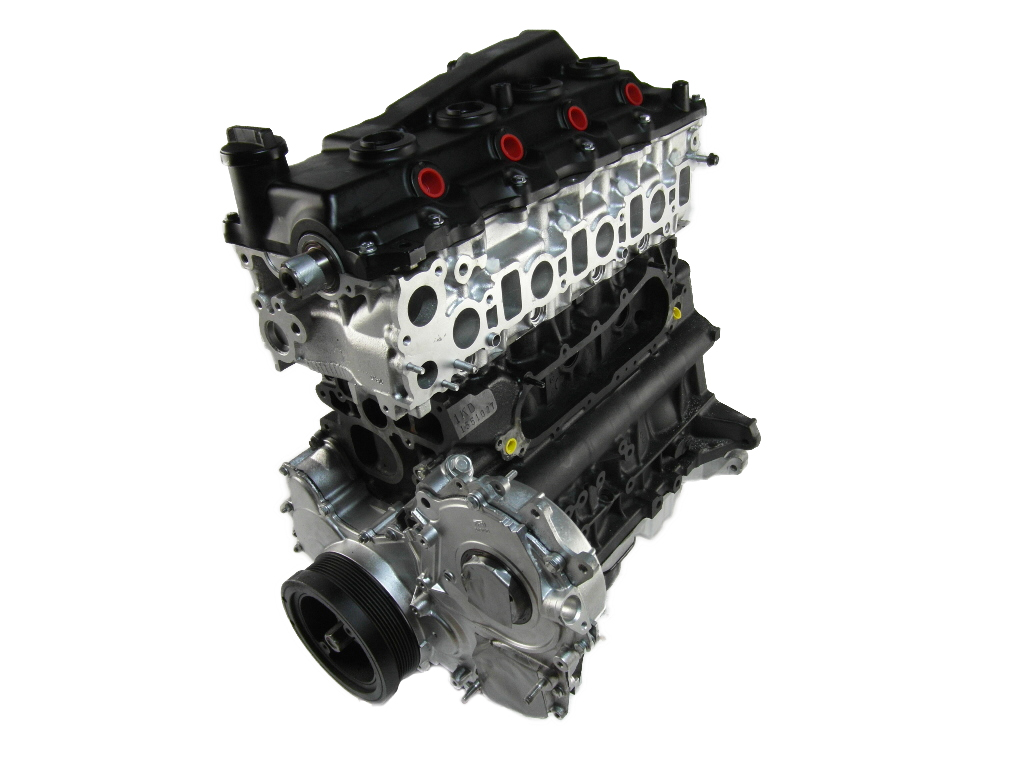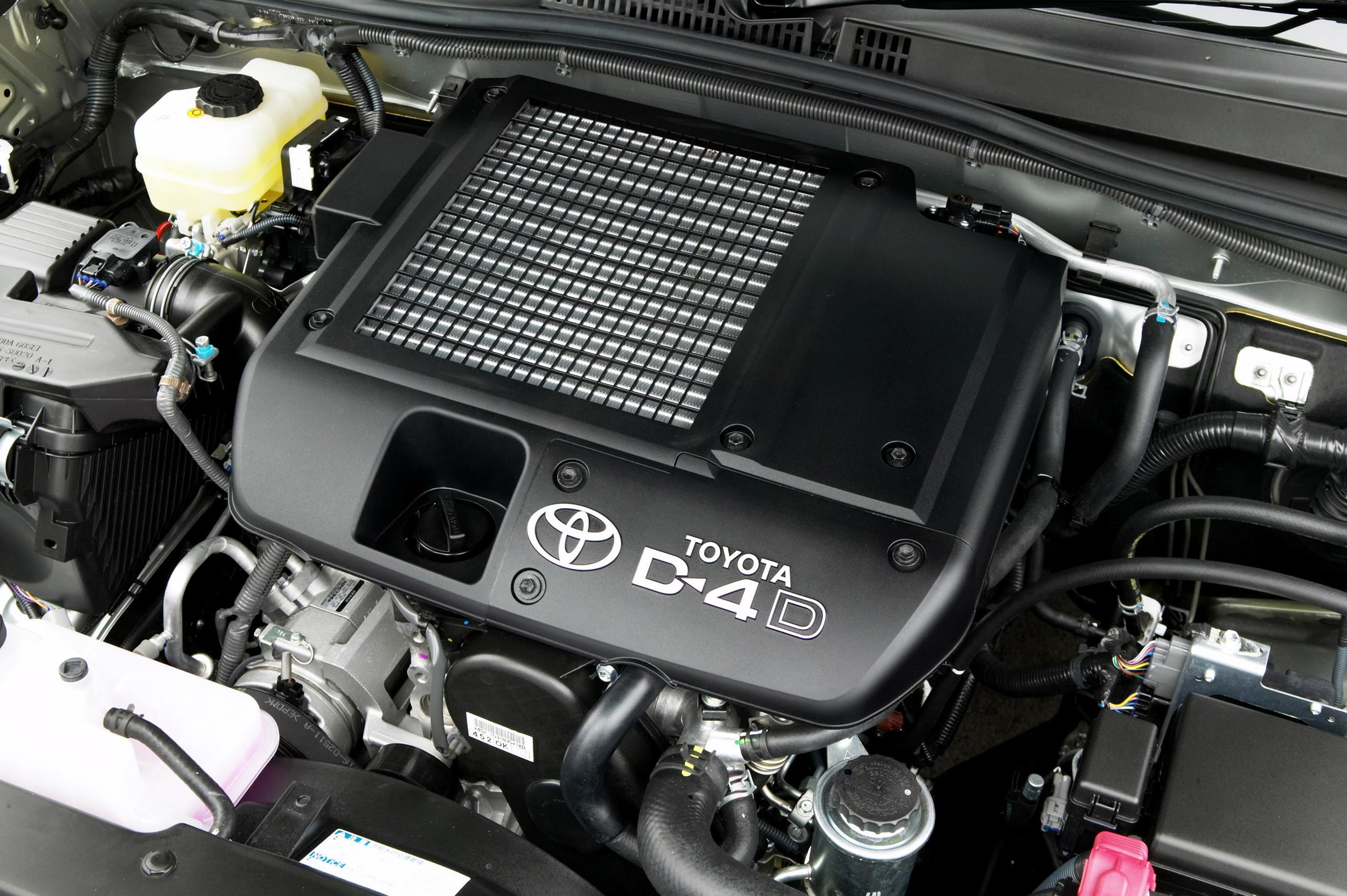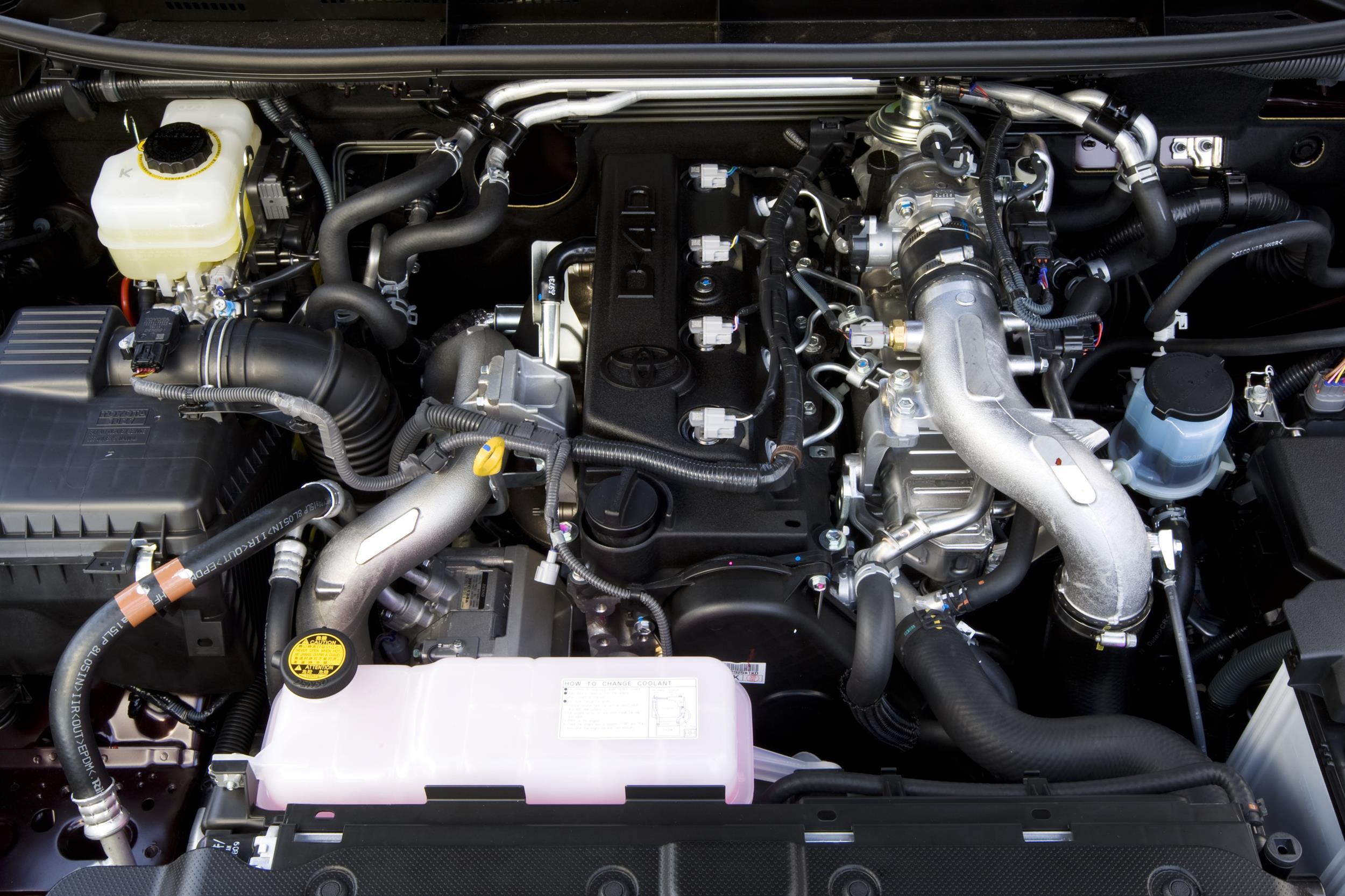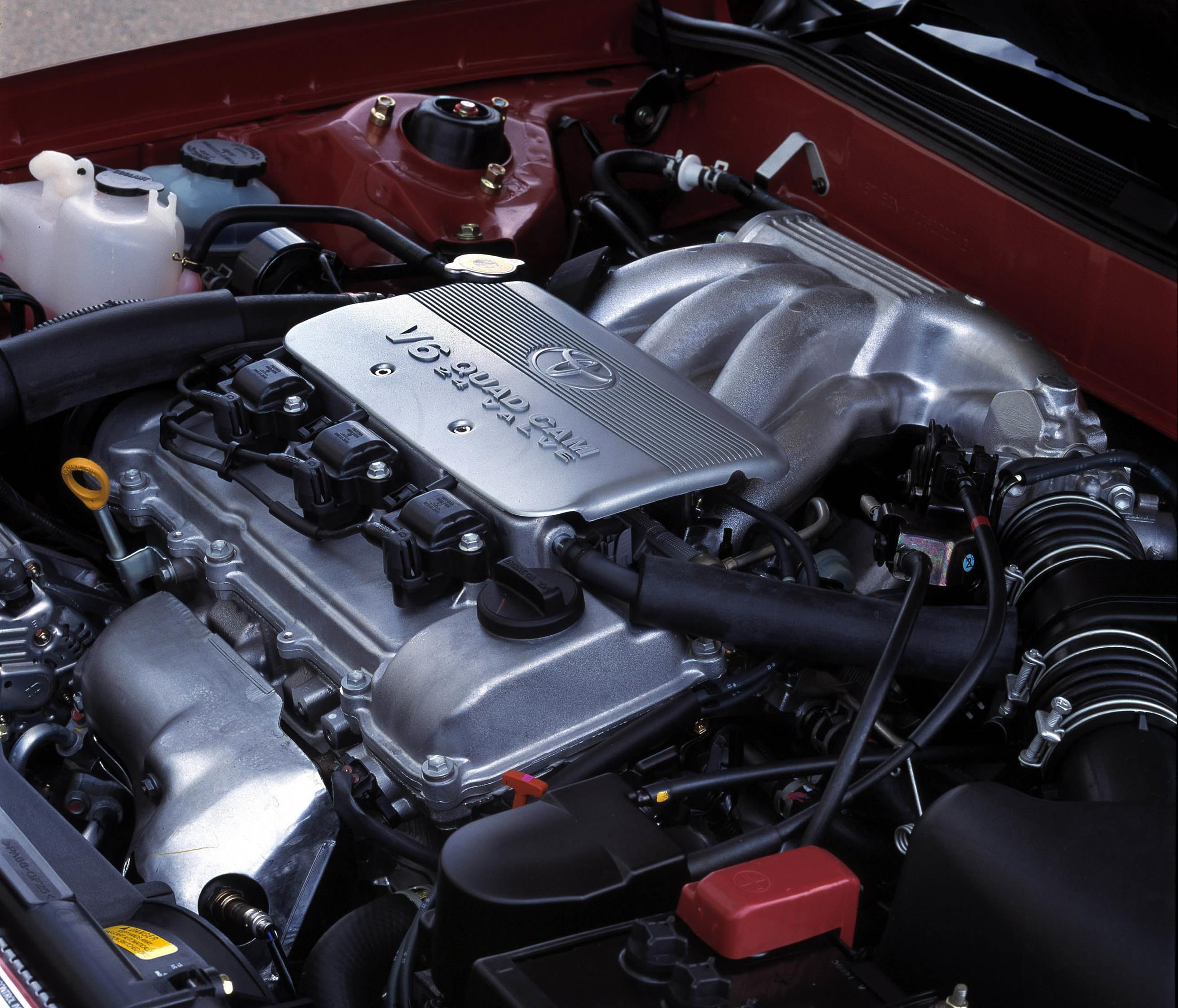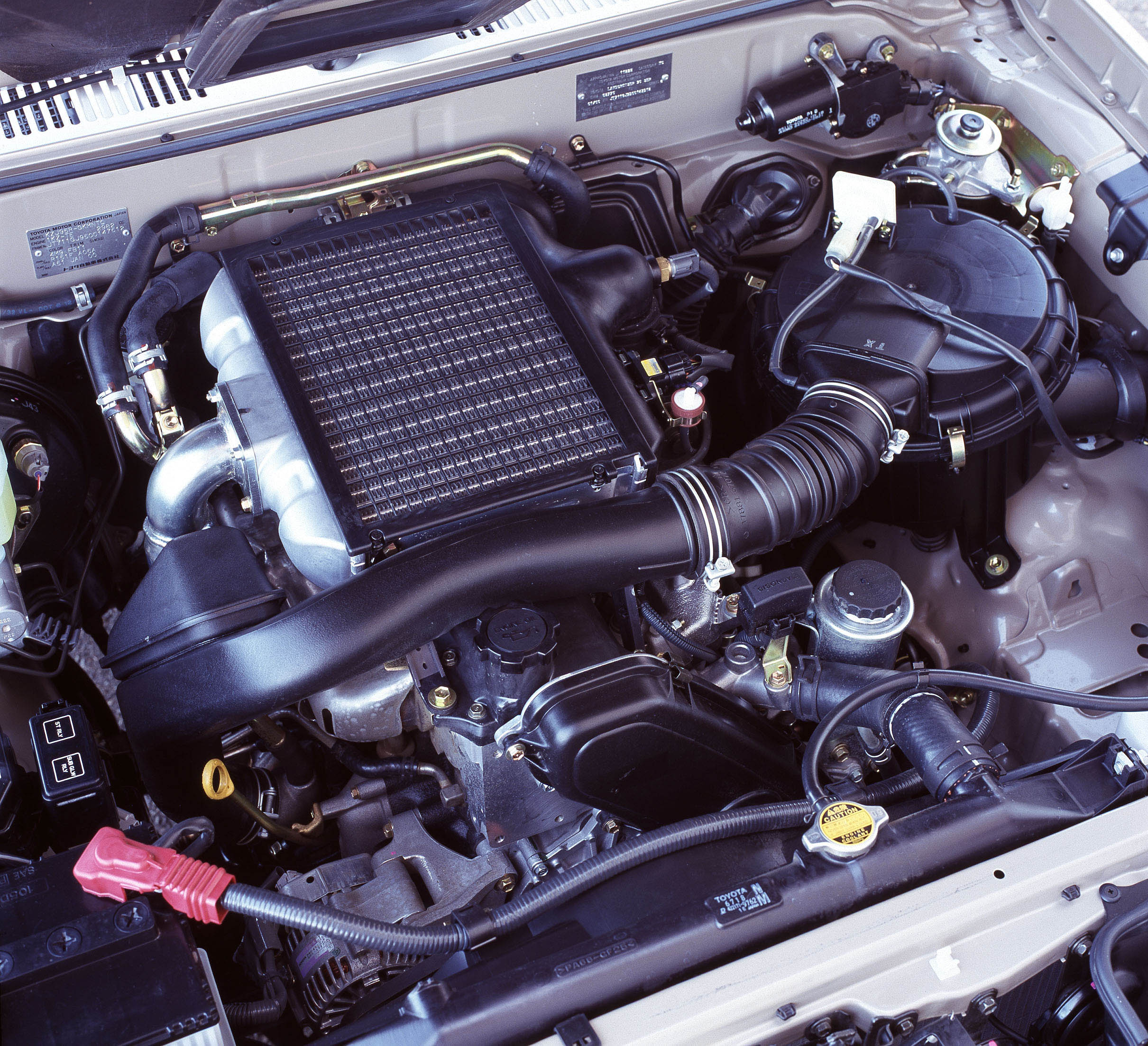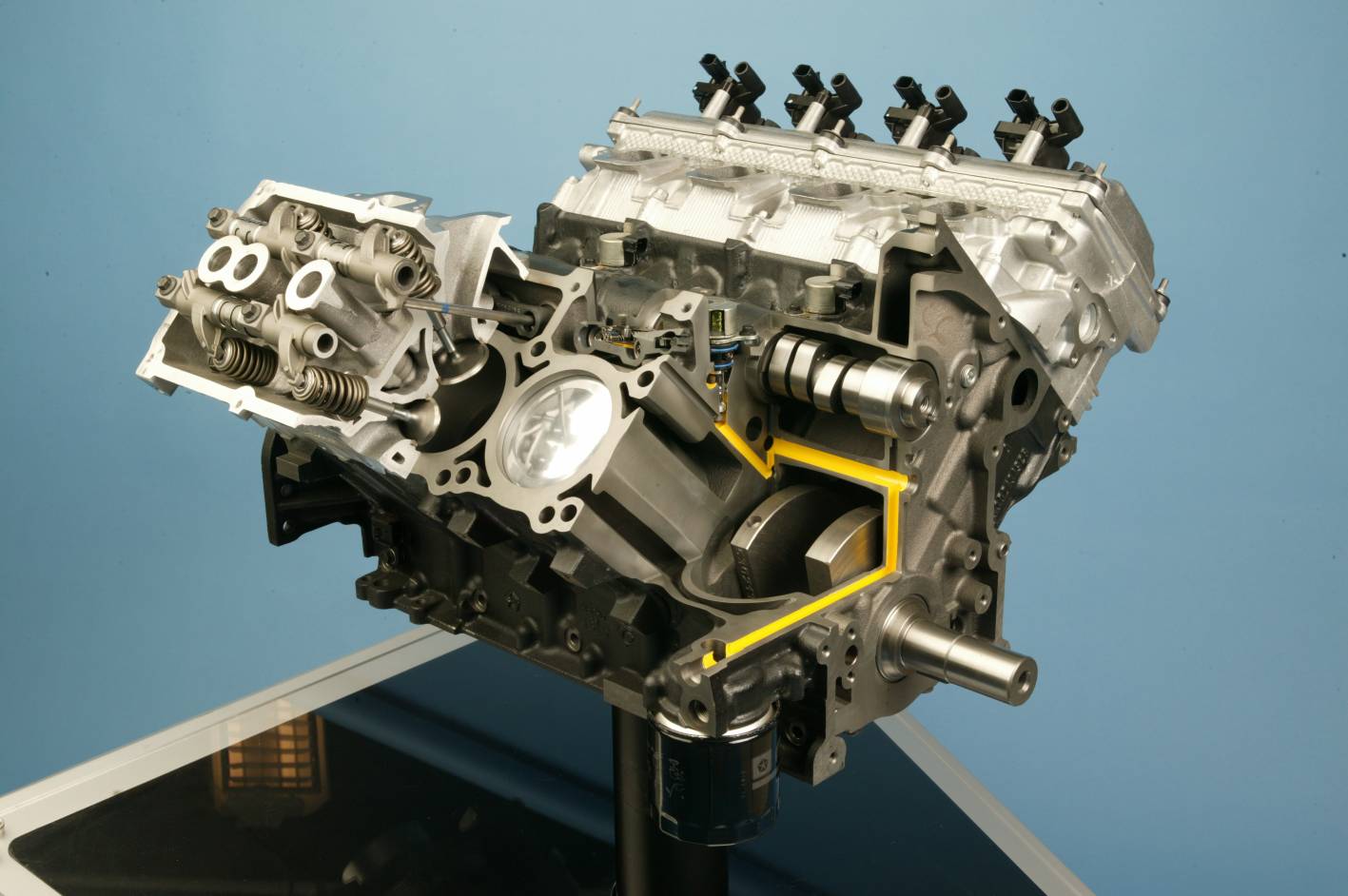Introduction
Toyota’s 1KD-FTV was a 3.0-litre four-cylinder turbo diesel engine. A member of Toyota’s ‘KD’ engine family, which included the related 2KD-FTV, key features of the 1KD-FTV included its:
- Cast iron block;
- Aluminium alloy cylinder head;
- Variable nozzle vane type turbocharger;
- Intercooler;
- Double overhead camshafts;
- Four valves per cylinder; and,
- Compression ratio of 17.9:1.
In Australia, the 1KD-FTV engine was first introduced in the Toyota Mk.7 Hilux in April 2005, before following in the 120-Series LandCruiser Prado and Mk.5 HiAce in 2006; the full range is given in the table below. The 1KD-FTV engine is being replaced by the 1GD-FTV and 2GD-FTV engines.
| Engine | Trans. | Years | Peak power | Peak torque | |
|---|---|---|---|---|---|
| Toyota Mk.5 HiAce | 3.0-litre turbo diesel I4 (Euro III) |
5sp man., 4sp auto |
2006-10 | 80kW at 3000rpm | 286Nm at 1200-1600rpm |
| 3.0-litre turbo diesel I4 (Euro IV) |
5sp man., 4sp auto |
2010-on | 100kW at 3400rpm | 300Nm at 1200-2400rpm | |
| Toyota Mk.7 Hilux | 3.0-litre turbo diesel I4 (Euro III) |
5sp man., 4sp auto |
2005-06 | 120kW at 3400rpm | 343Nm at 1400-3200rpm |
| 3.0-litre turbo diesel I4 (Euro IV) |
5sp man., 5sp auto |
2006-15 | 126kW at 3600rpm | 343Nm at 1400-3400rpm | |
| Toyota 120-Series LandCruiser Prado | 3.0-litre turbo-diesel I4 (Euro IV) |
6sp man., 5sp auto |
2006-09 | 127kW at 3400rpm | 410Nm at 1600-2800rpm |
| Toyota 150-Series LandCruiser Prado | 3.0-litre turbo-diesel I4 (Euro IV) |
6sp man., 5sp auto |
2009-on | 127kW at 3400rpm | 410Nm at 1600-2800rpm |
1KD-FTV block
The 1KD-FTV engine had a deep-skirt cast iron cylinder block with 96.0 mm bores and a 103.0 mm stroke for a capacity of 2982 cc. The block had a reinforcing rib to reduce engine vibrations, while the cylinder bores were liner-less.
Balance shafts
Unlike the 2KD-FTV engine, the 1KD-FTV engine had two counter-rotating balance shafts that were driven by the crankshaft timing gear. The purpose of the balance shafts was to counteract the secondary inertia forces inherent in an in-line four-cylinder engine. Since each piston reached its maximum speed – both rising and falling – at a point just above the centre of the stroke, the upward inertial force of the two rising pistons was greater than the downward inertial force of the two falling pistons. To oppose this, the balance shafts rotated at twice the speed of the crankshaft in opposite directions to one another.
Crankshaft, connecting rods and pistons
The crankshaft for the 1KD-FTV engine had eight balance weights and five journals, while the pin and journal fillets were roll-finished. The crankshaft bearings were made from aluminium alloy and had micro-grooved lining surfaces to optimise oil clearance for better cold-engine cranking performance and reduced engine vibrations; the upper main bearing had an oil groove around its circumferences. To reduce noise, vibration and harshness (NVH), the crankshaft pulley had a torsional rubber damper.
The high-strength connecting rods had aluminium bearings and plastic region tightening bolts. Furthermore, knock pins used at the mating surfaces of the bearing caps of the connecting rod to minimise shifting of the bearing caps during assembly.
The 1KD-FTV engine had aluminium alloy pistons with resin-coated skirts. Other features of the 1KD-FTV pistons included:
- A Sintered Iron Reinforced Material (SIRM) ring carrier in the top ring groove of the piston; and,
- A Physical Vapor Deposition (PVD) coating for the surface of the no.1 compression ring.
For cooling and lubrication, oil jets at the bottom of the cylinder block sprayed oil into the internal cooling channels of the pistons; these oil jets had a check valve to prevent oil supply when oil pressure was low.
Cylinder head
The 1KD-FTV engine had an aluminium alloy cylinder head which used plastic region tightening bolts. The cylinder head was mounted on a steel-laminate type head gasket, while a shim was used around the cylinder bores to increase the area of the sealing surface.
To reduce mass and noise, the 1KD-FTV engine had a plastic cylinder head cover. Inside the cylinder head cover, there was a baffle plate to reduce the consumption of engine oil through blow-by gas.
Turbocharger and intercooler
The 1KD-FTV engine had a variable nozzle vane type turbocharger which included an impeller, turbine, nozzle vane, unison ring, DC motor and nozzle vane position sensor. Exhaust gas from the exhaust manifold passed through the nozzle vane inside the turbocharger housing and then flowed to the exhaust pipe through the turbine wheel. The speed of the turbine wheel (and hence turbocharging pressure) varied according to the opening of the nozzle valve. For example,
- At idle, exhaust gas flow was relatively low and the nozzle vane was fully closed. However, since there was a slight clearance between the vanes, exhaust gas would flow through this clearance to the exhaust pipe (i.e. no bypass);
- At low engine loads or speeds, the nozzle vane actuator would retract the actuator linkage which was connected to a unison ring – this would cause the drive arms on the unison ring to change nozzle vane angle toward the closed position. As a result, the flow velocity of the exhaust gas to the turbocharger increased for greater torque output; and,
- At high engine loads or speeds, the actuator would pull down the actuator linkage and the drive arms would change nozzle vane angle toward the open position – this would maintain the specified turbocharging pressure and reduce exhaust gas back pressure, improving power output and fuel consumption.
Inside the bearing housing of the turbocharger, a water jacket was used to improve cooling.
The IKD-FTV engine had an air-cooled intercooler which was located on top of the engine and intake air to increase its density and increase engine performance. The intercooler and the inlet tank were made of aluminium, while the outlet tank was made of plastic for mass reduction.
Camshafts
The 1KD-FTV engine had double overhead camshafts with a belt and gear drive. As such, the intake camshaft was driven by a replaceable rubber timing belt, while the exhaust camshaft was driven via a gear on the intake camshaft. To reduce noise, the gear had small diameter, flat teeth gears.
To increase abrasion resistance, the noses of each cam lobe were chill-treated.
Valves
The 1KD-FTV engine had four valves per cylinder – two intake and two exhaust – that were actuated directly by shim-less valve lifters that provided a large cam contact surface. Adjustment of valve clearance required the valve lifters to be replaced.
The 1KD-FTV engine had valve overlap of 2 degrees, intake duration of 219 degrees and exhaust duration of 225 degrees.
| 1KD-FTV Valve Timing | ||
|---|---|---|
| Intake | Open | 2° BTDC |
| Close | 3837° ABDC | |
| Exhaust | Open | 45° BBDC |
| Close | 0° ATDC | |
Intake and throttle
The 1KD-FTV engine had two intake ports for each cylinder which had different shapes to increase swirl in the combustion chamber. Unlike the standard 2KD-FTV engine, all 1KD-FTV engines had vacuum-actuated swirl control valves in one of the two intake ports for each cylinder. The swirl control valves consisted of a stainless steel shaft and an actuator which was integrated in the valve. At low engine speeds, the swirl control valve would close to increase swirl; for cold starts and high engine speeds, the valve would be open.
The intake shutter valve (throttle valve) was fitted with a rotary solenoid type torque motor, while non-contact sensors were used for both the intake shutter valve and accelerator pedal position sensors.
Common-rail injection (D-4D)
The 1KD-FTV engine had common-rail injection (Toyota’s ‘Direct Injection 4-Stroke Common Rail Diesel Engine’, or D-4D). The function of the common-rail was to store fuel that had been pressurised by the supply pump. The common-rail contained a main hole and five branch holes that intersect the main hole; each branch hole functions as an orifice that dampens the fluctuation of the fuel pressure. Furthermore, the common-rail had a fuel pressure sensor and a pressure limiter that mechanically relieved pressure if it rose abnormally (200 MPa).
The injectors consisted of a nozzle needle, piston and solenoid valve. When an electric current was applied to the solenoid coil, the solenoid valve would retract. The orifice of the control chamber would then open to allow fuel to flow out, causing fuel pressure in the control chamber to drop. Simultaneously, fuel would flow from the orifice to the bottom of the piston and the piston would rise. As a result, the piston would raise the nozzle needle to inject fuel.
For the 1KD-FTV engine, common-rail pressure ranged from 30 to 160 MPa. The 1KD-FTV engine used eight-hole type injectors where the holes measured 0.14 mm. Furthermore, each injector was located in the centre of the combustion chamber.
The ECU calculated target injection pressure based on signals from the acceleration pedal position sensor and crankshaft position sensor. The ECU controlled the Suction Control Valve (SCV) opening to regulate pumping volume so that the pressure detected by the fuel pressure sensor matched the target injection pressure.
The 1KD-FTV engine could perform ‘pilot injection’ which consisted of a series of small injection phases prior to the main injection phase. Pilot injection was used to reduce:
- Ignition delay at the main injection;
- Noise and vibrations; and,
- Emissions by preventing sudden increases in combustion pressure.
The electronic injection system determined the volume, timing and count interval between pilot injections and the main injection.
For ease of starting, the glow plug was placed between the intake ports of each cylinder. Firing order for the 1KD-FTV engine was 1-3-4-2.
Exhaust and emissions
The 1KD-FTV engine used a ball joint to connect the exhaust manifold to the front exhaust pipe and an oxidation catalytic converter was used to clean exhaust gas particulates (HC and CO).
For models complying with Euro III and beyond emissions standards, the 1KD-FTV engine used cooled exhaust gas recirculation (EGR) to reduce recirculate a small amount of inert exhaust gas into the intake manifold, thereby reducing peak temperatures in the combustion chamber and NOx formation. For the 1KD-FTV engine, a vacuum port for a Vacuum Switching Valve (VSV) was used to improve valve closure response.
1KD-FTV problems
1KD-FTV engine: injector seal failure (2005-07)
Initially, the 1KD-FTV engine had copper seats at the base of the common rail injector to provide a seal against the combustion chamber.These seats, however, can fail and cause the following problems:
- Blow-by gases enter the tappet cover and mix with the engine oil – this bakes and carbonises the engine oil;
- Blow-by gases block the oil sump pick-up;
- The engine can be starved of oil;
- The lack of lubrication cause excessive friction and heat, causing the bottom end bearings to melt and engine failure.
Symptoms of a failed common rail injector seal include:
- White smoke and a rattling noise after a cold start; and,
- A blocked oil sump pick-up.
AustralianCar.Reviews understands that new diamond-like coating (DLC) seats were introduced for the 1KD-FTV engine from August 2007. AustralianCar.Reviews recommends that owners of vehicles with the 1KD-FTV engine which have copper injector seats have them replaced with the updated injectors and the oil sump pick-up cleaned if there is evidence of the copper injector seats allowing blow-by gases to pass. At each service, the oil sump pick-up should be inspected and, if required, cleaned by removing the oil sump covers, taking out the screen and spraying it with a carbon cleaner or degreaser.
For further information, please see pradopoint.com and What Causes the Hilux and Prado Clogged Oil Sump Pickup?
1KD-FTV engine: injector failure
It is not uncommon for the injectors in the 1KD-FTV engine to fail around 120,000 to 140,000 kilometres, though they may fail as early as 75,000 kilometres or last 250,000 kilometres. Symptoms of a failing injector include:
- A loud ‘knock’ noise that is audible when the windows are down, particularly when the engine is cold;
- Poor fuel economy;
- An erratic or rough idle; and,
- Rough running, particularly under load at low engine speeds.
The shorter lifespan of these injectors is attributable to the high fuel pressure (from 30 to 160 MPa), multiple injections per combustion stroke, small tolerances and fuel quality. As a preventative measure, it is recommended that the injectors be replaced every 100,000 kilometres. At each service, it is recommended that a diagnostic test be conducted to measure feedback volumes or total volumes for the injectors to see if they are working properly.
1KD-FTV engine: cracked pistons
For 2006-14 Toyota vehicles with 3.0-litre 1KD-FTV engines that comply with Euro IV emissions standards, the pistons are susceptible to cracking. While the size of the cracks varies, they can amount to a localised rupture. In affected vehicles, piston cracking is most common between 100,000 km and 150,000 km. Issued in September 2014 by Toyota, Technical Service Bulletin EG-008T-0112 acknowledged the problem of cracked pistons for the Euro IV 1KD-FTV engine.
Symptoms of a cracked piston include:
- A sudden, strong knocking noise from the engine;
- Black smoke from the exhaust;
- A loss of power;
- The engine ‘running rough’ (i.e. on 3 cylinders); and,
- Excessive crankcase pressure.
The pre-Euro IV 1KD-FTV engines did not experience this problem because the piston had a metal fibrous structure fused into the piston crown. The piston design, however, was changed for the Euro IV 1KD-FTV engine.
To reduce the risk of cracked pistons in a Euro IV 1KD-FTV engine, it is recommended that:
- The engine not be subjected to chip tuning;
- The vehicle not be driven for under load for extended periods; and,
- That the fuel injectors are serviced every 100,000 kilometres.
While these measures will reduce the likelihood of failure, they do not rectify the design fault of the pistons.
According to the technical bulletin, two production changes – ‘improved injectors to prevent wrong combustion’ and more robust pistons – were implemented in 2014 –
- For the 150-Series LandCruiser Prado (KDJ150/KDJ155), these production changes were implemented in January 2014 from engine no. 2361817; and,
- For the Mk.7 Hilux (KUN26), these production changes were implemented in July 2014 from engine no. A477120.
Despite these changes, however, cracked pistons have been reported in revised vehicles (although the failure rate is lower).
